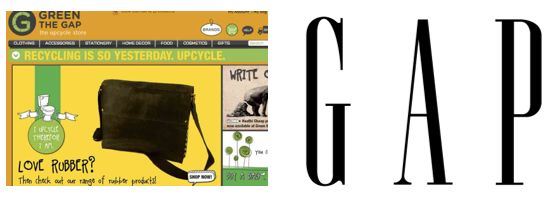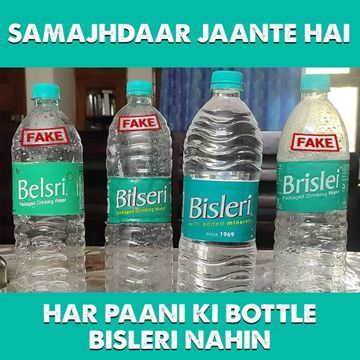We are more than familiar with some of the famous brand names such as Google, Vogue, Ford, Monginis, Ferrero Rocher, Amul, Apple, Pizza hut, Kit Kat, Bisleri and so on. For most of them are our go to brands for the simple reason that these brands have established significant amount of reputation and goodwill nationally and internationally through their quality, experience, uniqueness, etc. These marks hold a reputation so high that the Indian legal framework has taken a step ahead in order to provide "well known" marks with greater protection across all goods & services. For instance, although Apple Inc. has registered the mark Apple as well-known mark in respect of consumer electronic devices, no other company can register with the mark 'Apple' under any goods & services even if it is completely unrelated to electronic devices & technology. The Trade Mark Act, 1999 gives trademark owners a provision to file an application to the Registrar for declaring their mark to be "well-known"!
What is a well – known mark?
There are certain factors mentioned under the Trademark Act, 1999 that are taken into consideration while determining whether a mark is a well-known mark. These factors have been established by following the guidelines set out by Joint recommendation of Paris Convention and the TRIPS Agreement. The provisions imply that the Registrar has the final authority to declare a mark as the well-known mark. Nevertheless, courts have been driven towards declaring the marks to be well-known marks whenever a suit for passing off or infringement was presented before them. Broadly, the factors include:
- Knowledge or recognition of the mark amongst relevant section of public, the number of potential customers, distribution team, the business circles.
- Duration, extent, and geographical area of any use or promotion of the trademark
- The mark to be used & registered in India, it could be registered in any other jurisdiction other than India.
- The record of successful enforcement of rights in the trademark including any record stating that the mark has been recognized to be well known or famous by any court or registrar.
- Most importantly, the trademark should be well known to the public at large in India.
Role of Internet in goodwill
The concept of well-known has also evolved through the development of the doctrine of trans-border reputation. In the modern era, digitization and the Internet does not respect territorial boundaries in terms of trademark protection. The phenomenally high reputation and extensive advertising of famous marks transcend the territorial boundaries and acquire reputation in the countries wherein they might not be registered. The trademarks act recognizes this doctrine and has established that registration in India is not necessary to be considered as a well-known mark nevertheless, its reputation & goodwill in India is paramount.
For instance, in the case of Milmet Oftho Industries and Ors v Allergan Inc, an Indian pharmaceutical company is selling drug named 'Ocuflox' and an international pharmaceutical company (Allergan) is also selling drug with similar name. The Supreme Court observed that since Allergan was first to introduce the said trademark in the international market, it was therefore entitled to injunction. The ruling was based on the doctrine of trans-border reputation wherein the court protected the mark that was used in the foreign market prior to its use in India and even though the mark was never used in India. Therefore, time of adoption and usage is an operative test to determine trademark infringement.
Protection of Well-Known Marks
It is very common for a consumer to associate any other goods or services under same trade name as a well-known mark, to the services offered by the well-known trademark owner. Any remote association of well-known mark with related or non-related goods & services vitiates or impairs the uniqueness or singularity gained by a well known mark In other words, it dilutes the distinctiveness offered by the well-known mark. Often trademark infringement suits by well-known or famous marks are termed as trademark bullying. However, a liberal view needs to be adopted in such cases because these brands are known by their marks, the essence of their functioning depends on their mark and any remote harm to the same.
In an intriguing instance, one of the world's largest clothing and accessories companies 'GAP' sent a legal notice of trademark infringement to a Delhi-based NGO, Swechha for using 'Green Gap Enviro Solution for selling recycled and up cycled products. Gap Inc. asked Green the Gap to refrain using 'gap' in their name and to take down from all online platforms where they sell their products. The NGO having no resources to fight back against the giant took over the social media and started a campaign "save the gap". They gained attention by alleging this act by Gap Inc. as a case of trademark bullying by an international corporate giant, which was exercising its dominance and power on a smaller entity on unreasonable grounds of infringement. However, the court restrained the NGO from manufacturing, selling or using the trademark.

If a liberal view were taken here, one would realize that for Gap Inc. their entire reputation, name & goodwill sustains on their trademark 'GAP' therefore, any remote infringement to the same would cause tremendous dilution of their trademark as people are casually familiar with the brand GAP and they are quite likely to associate it with another trademark 'Green the Gap' resulting into undesired brand experience.
Recently, 'Bisleri' tweeted about the fake bottles deceptively similar to bisleri bottle.

These fake bottles are sold in remote places, making it difficult for 'Bisleri' to determine presence of these fake bottles. A well – known mark like 'Bisleri' enjoys these benefits:
- A well – known mark enjoys protection across all goods & services irrespective of whether the mark is been used for those goods & services or not.
- Subsequently, owner of the well – known mark can oppose any similar marks in any trademark class.
- An opposition can be filed in different jurisdictions irrespective of whether the mark is used in that jurisdiction or not, as it's officially well-known! For instance, Amul recently won a trademark and copyright infringement battle against Amul Canada before the Federal Court of Canada. The court also accorded well – known status to Amul India.
- A trademark application of a mark remotely similar to the well – known mark is sure to be rejected for registration. Also, owner of a well – known mark can make a request for removal of any infringing mark.
- Lastly, infringer of a well – known mark is liable to pay punitive damages to well – known mark holder in case of infringement.
How to keep track of infringing marks?
- Undertake a trademark watch regularly and consistently.
- It is also necessary to keep inspecting the market regularly.
- After coming across any similar or deceptively similar marks, it is advised to file a trademark opposition.
- In a case where the infringing mark is not filed for a trademark registration, a legal notice could be served to the infringing calling him to restrain usage of the infringing mark.
- Lastly, if even after serving a legal notice the infringing party does not restrain himself from using the similar mark, a civil suit can be filed against the infringer.
Conclusion
The selling power of modern well known marks depends upon the psychological hold of it upon the public, not merely upon the merit of the goods & services upon which it is used but equally upon its singularity and uniqueness as discussed earlier. Therefore, the degree of protection for these marks depends upon the extent to which it is actually unique and different from other marks. Having said that, trademark bullying seems to have become a common defence against every trademark infringement suit by a corporate giant but not every legal notice of cease-and-desist would amount to trademark bullying. The intricacy of each case is different and the courts decide according to individual scenario while looking out for trademark bullying to determine whether the injunction sought is to avoid actual consequences of infringement suit or not. Moreover, a balance also needs to be made before categorizing a case as trademark bullying because reputable firms like Apple essentially function in the market on the basis of their brand name and logo; any remote harm to their brand name would result into huge loss and not just in monetary terms. These entities utilize substantial resources and efforts in infringing marks, due diligence, any unlawful use so as to protect their trade reputation. The harsh stereotype of corporate giants abusing their power of dominance should be kept aside while terming an infringement suit as bullying.
These entities might just serve smaller companies with standard cease and desist letters that contain subtle threats in legal language alleging trademark infringement and dilution. But if giant industries proceed with initiating trademark opposition proceedings than a liberal view should be taken because no company will spend huge amounts on litigation just to harass a smaller insignificant entity. To know more about securing trademarks, please write to us at photon.ip@photonlegal.com and we would be happy to guide you.
The content of this article is intended to provide a general guide to the subject matter. Specialist advice should be sought about your specific circumstances.


